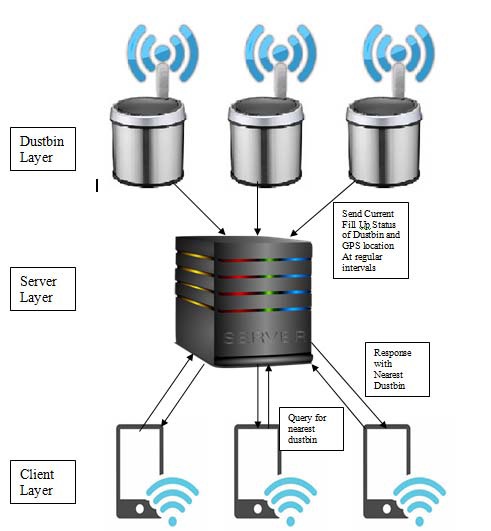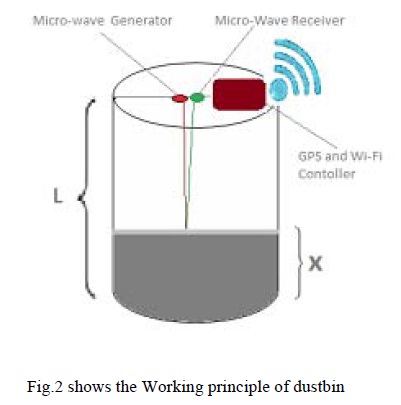





Published on Feb 14, 2025
The govt. of India has recently launched a smart city project and for these smart cities to be smarter it is necessary that the garbage collection system has to be smarter and in addition to that the people need easy accessibility to the garbage disposing points and garbage collection process has to be efficient in terms of time and fuel cost.
Most of the urban cities and town in India are not well designed to facilitate the proper garbage disposing and collection mechanism. Also the cities are expanding rapidly putting the pressure on existing infrastructure which is not expanding at the same pace that of urbanization .As the govt. of India has launched smart city project to utilize the IT enabled solution so there is an implicit need to make the city cleaner. Our proposed system provide an IT based solution to garbage collection providing greater accessibility, planning appropriately for disposing process and at the same time enabling collection of garbage generation data. Our proposed system solves three related problems:-
1) Greater access to the garbage disposing points (public dustbin)
2) Efficient in terms of time and fuel cost.
3) Provide data collection facility on how much a city generates garbage and accordingly plan disposing process.
This proposed system has been divided into three layers:

This layer consists of internet and Wi-Fi enabled dustbins. Every dustbin contains a sensor which senses the fill up status of dustbin and sends the data to the server. It also sends it current GPS location to the server at regular intervals.
Server collects the fill up status and location of dustbins. It processes the clients query and it respond with nearest dustbin location and with direction to access dustbin.
Clients request for the nearest location of the IT enabled dustbin to the server using Mobile App designed for this purpose
X is current fill up status, T is time duration between generation of wave and wave received by receiver and C is the speed of light. And we will calculate the value of X using formula given below
X=L-(CT)/2
And similarly percentage of fill up is calculated using formula given below
P=(X/L)*100
Where P is the % fill up Here we are assuming the wave path is almost vertical..

Now the question arises how we collect the garbage optimally from these dustbins for this purpose we can use following three scheduling Algorithm.
In this scheduling collection process carried out after fixed interval for example collect after every three days. Here we can use the Traveling salesman problem algorithm for route planning.
In this scheduling the dustbins are collected according to the decreasing current fill up status. For example if we have 3 dustbins with fill up status 92%, 80% and 96%. Then collect in this order 96%, 92% and then 80%
In this scheduling we first find out the average of all fill up status of all dustbins. Then if average is greater than some threshold like 70% then schedule the collection process and within that scheduling collect according to the Priority scheduling or Traveling salesman problem.
In this scheduling we will carry the collection process only when all the dustbins are completely filled up. Here we can again use the traveling salesman problem algorithm for route planning.
1. Our system provides greater accessibility to the dustbin.
2. In our system if dustbin is relocated to another location it will automatically registered with the server with the new GPS location.
3. It will save fuel and time using appropriate route planning. Here we can use traveling salesman problem for route planning.
4. It will generate less pollution as we are saving fuel here which is mostly diesel and petrol.
5. We can plan and design the collection process as here we can estimate the current garbage disposing levels on monthly basis using the data provided by IT enabled dustbin.
One of the utility of our system is that the Govt. can use the garbage generations statistics for policy and program design. If the system is implemented properly it will really make the cities cleaner and greener and makes the smart city a reality.
[1] Michael Batty , Kay Axhausen, et al., “Smart Cities of the Future,”UCL centre for advanced spatial analysis on working paper series, ISSN 1467-1298, Paper 188 - Oct 12.
[2] Narayan Sharma, Nirman Singha, Tanmoy Dutta, “Smart Bin Implementation for Smart Cities”, International Journal of Scientific & Engineering Research, Volume 6, Issue 9, September-2015 ISSN 2229-5518.
[3] “Smart Cities” available at www.smartcities.gov.in/ Bikramjit Singh et al, / (IJCSIT) International Journal of Computer Science and Information Technologies, Vol. 7 (2) , 2016, 610-611
| Are you interested in this topic.Then mail to us immediately to get the full report.
email :- contactv2@gmail.com |